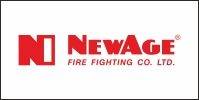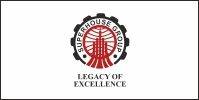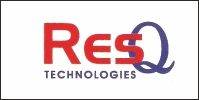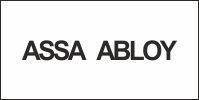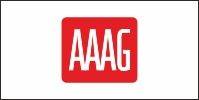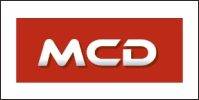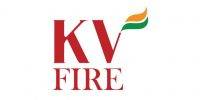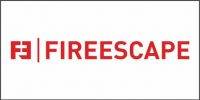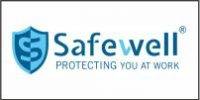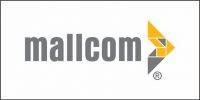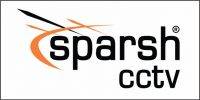 The need for fire-fighting and rescue organisations to optimise their costs is not a new concept, but it is fair to say the challenges of managing the spiralling costs and increased demands on resources are only continuing to make the landscape more complex.
The need for fire-fighting and rescue organisations to optimise their costs is not a new concept, but it is fair to say the challenges of managing the spiralling costs and increased demands on resources are only continuing to make the landscape more complex.
For most fire and rescue organisations, purchasing spend is the largest or second largest area of expenditure. Consequently, Procurement departments have been expected to deliver greater financial value improvements in recent years. Public sector bodies have been forced to find ways to secure more value from every pound they spend in supplying services to their end-users.
It’s no surprise that for many fire and rescue organisations, trying to procurement efficiency without compromising standards can become like the search for the proverbial Philosopher’s Stone.
Cost containment isn’t the only reason for the increased focus on purchasing. Averting fraud and other business risks, like the recent horsemeat scandal, is another. Recent media stories on child labour and slave wages in some supply chains, and questionable supplier management tactics by some supermarkets are examples of the added socio-economic challenges compelling organisations of all sorts to improve their Procurement capability.
 A reference to UK supermarkets might seem strange in an article about fire and rescue management. However, a report by the think-tank Reform, published last year, suggested that the public sector services should in fact adopt the same type of thinking that has cut costs and improved quality in grocery retail, high street retail, supermarkets and even car manufacturing.
A reference to UK supermarkets might seem strange in an article about fire and rescue management. However, a report by the think-tank Reform, published last year, suggested that the public sector services should in fact adopt the same type of thinking that has cut costs and improved quality in grocery retail, high street retail, supermarkets and even car manufacturing.
Procurement practitioners in the fire-fighting and rescue sector face broadly similar underlying issues as their colleagues in other sectors. In truth, majority of Procurement functions in most sectors today still struggle with achieving the success and recognition they crave. And Procurement is nowhere near as embedded in the fabric of most organisations as it should be.
Purchasing professionals in such functions are frustrated by the myriad of problems this brings – from regular squabbles with territorial stakeholders and budget-holders who don’t recognise Procurement’s role to disagreements with Finance colleagues who think “Procurement cost savings” is all smoke-and-mirrors.
Becoming More Effective
For fire and rescue Procurement leaders and staff, it appears the biggest frustration they face is the lack of appreciation of their value-add in their organisations, and, commonly, being ‘denied’ the opportunity to showcase their value-proposition. As one purchasing manager put it in a blog post,
 Most purchasing people agree that what Procurement wants boils down to enhanced capability and better recognition across the wider organisation. Yet most efforts to enhance Procurement are not effectively focussed at these outcomes. It’s no surprise that many Procurement departments end up going through transformation after transformation.
Most purchasing people agree that what Procurement wants boils down to enhanced capability and better recognition across the wider organisation. Yet most efforts to enhance Procurement are not effectively focussed at these outcomes. It’s no surprise that many Procurement departments end up going through transformation after transformation.
Procurement is About People
When you examine the challenges most Procurement functions struggle with they all relate to ‘people’ – whether it’s territorial stakeholders; short-sighted or egotistical senior executives; or even the competencies, behavioural attitudes and thinking patterns of Procurement staff. These ‘soft’ issues are the root-causes of the problems that prevent most Procurement functions from firing on all cylinders.
Most efforts to enhance Procurement place overriding emphasis on improving processes and systems, with inadequate attention paid to people. Yet it is people that do the work and deliver results; not computers, strategies or processes – those things are simply tools or enablers we use to get the work done. So people matter most!
Our overriding focus on the tools and technical aspects of the purchasing work is the ball and chain holding Procurement departments back. When we expand our thinking to embrace the fact that organisations are about people, first and foremost, we create the ability to focus on what really matters for success on the job.
Procurement functions that achieve long-term success and kudos in the enterprise always give high priority to the human factors in the purchasing domain. Those functions still seeking their Procurement mojo must recognise that purchasing is a people-centric activity; they must place greater emphasis on the people-related factors – the soft issues – that underpin or hamper Procurement success. There are two aspects to this;
- The Procurement organisation – Recognising the importance of the people inside Procurement who do the work, and taking the right steps to grow the function’s talent or ‘people capability’.
- Stakeholder perceptions of Procurement – Making a greater effort to manage interactions and relationships with people outside the function, and building a credible ‘Procurement brand’ to connect with these folks better.
People Inside Procurement
An effective functional organisation is the bedrock of Procurement success, and people are the lifeblood of any organisation. But, sadly, many Procurement leaders invest inadequate time and energy on inspiring, engaging and developing their people. As uncomfortable as it might sound, this reflects a key failing; because the Procurement leader is the most critical person in the Procurement organisation.
Leadership is the glue that holds everything else together. So it is crucial that Procurement has an effective leader. An effective Procurement leader is not a ‘purchasing geek’ but a ‘business leader’, who is adept at aligning Procurement’s efforts to the broader business priorities and cultivating relationships, especially at senior levels, to further Procurement’s agenda. This is particularly crucial in the public sector where Procurement must operate under complex and sometimes conflicting priorities, and deal with a diverse range of stakeholders on safety-critical and risk related issues.
Procurement leaders must appreciate that building people capability means ensuring Procurement has the right calibre of individuals, who understand how their actions bolster the function’s success and its reputation. This isn’t about having a team with high technical expertise, such as category management or strategic sourcing. Rather it’s about attitudes as well as aptitudes. Having sound technical knowledge is of limited value if you’re unable to exploit that knowledge successfully because you’re not organisationally savvy.
To educate stakeholders across the fire-fighting and rescue organisation and create alignment with the Procurement agenda you must be able to ‘connect’ with a range of personalities and win them over – you must have highly developed soft skills; competencies that enable you to navigate organisational dynamics with flair.
The most effective purchasing people are those with great soft skills – attributes like persuasive communication; self-leadership; influencing; results-orientation; and emotional intelligence. Think of technical purchasing skills as ‘Qualifiers’ – skills that simply qualify you to play in the purchasing sandpit; whereas soft skills are ‘Order-winners’, the key intrapersonal and interpersonal competences that enable you to win in the job. You can’t possibly be a half-decent professional without the right technical skills. But to be effective and outclass your average peers you must have highly-developed soft skills.
Procurement people must be held accountable for their performance as well as their behaviours – because “performance” is not just about what we achieve; the behaviours and attitudes we exhibit are as important as what we achieve.













